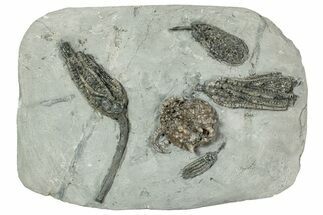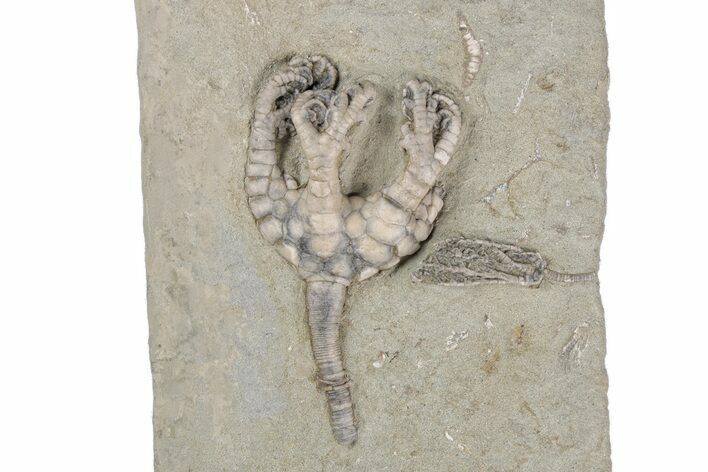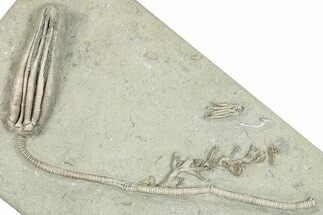This Specimen has been sold.
4.35" Fossil Crinoid Plate (Two Species) with Starfish - Indiana
This is a beautiful, 4.35" wide plate of detailed fossil crinoids and a starfish, collected from the famous crinoid beds of Crawfordsville, Indiana. These fossils have been microscopically prepared using air abrasives, revealing their intricate details and three dimensional preservation. The two crinoids include Histocrinus coreyi (#28 - 1.05" long including stem) and Taxocrinus colletti (#83 - 2.2" long including stem). The starfish is of the species Calyptactis confragosus and measures .55" wide.
It comes with an acrylic display stand.
It comes with an acrylic display stand.
Crinoids from the Ramp Creek Limestone were likely buried in sediment from nearby deltas during storms. The resulting siltstone deposits are soft enough that fossils can be extracted in exquisite, three-dimensional relief.
Crinoids, sometimes commonly referred to as sea lilies, are animals, not plants. They are echinoderms related to starfish, sea urchins, and brittle stars. Many crinoid traits are like other members of their phylum. Such traits include tube feet, radial symmetry, a water vascular system, and appendages in multiples of five (pentameral). They first appeared in the Ordovician (488 million years ago) and some species are still alive today.
Crinoids, sometimes commonly referred to as sea lilies, are animals, not plants. They are echinoderms related to starfish, sea urchins, and brittle stars. Many crinoid traits are like other members of their phylum. Such traits include tube feet, radial symmetry, a water vascular system, and appendages in multiples of five (pentameral). They first appeared in the Ordovician (488 million years ago) and some species are still alive today.
SPECIES
Histocrinus coreyi, Taxocrinus colletti & Calyptactis confragosus (Starfish)
LOCATION
Crawfordsville, Indiana
FORMATION
Edwardsville Formation
SIZE
4.35 x 2.65" rock
CATEGORY
SUB CATEGORY
ITEM
#215819
We guarantee the authenticity of all of our specimens.
 Reviews
Reviews














